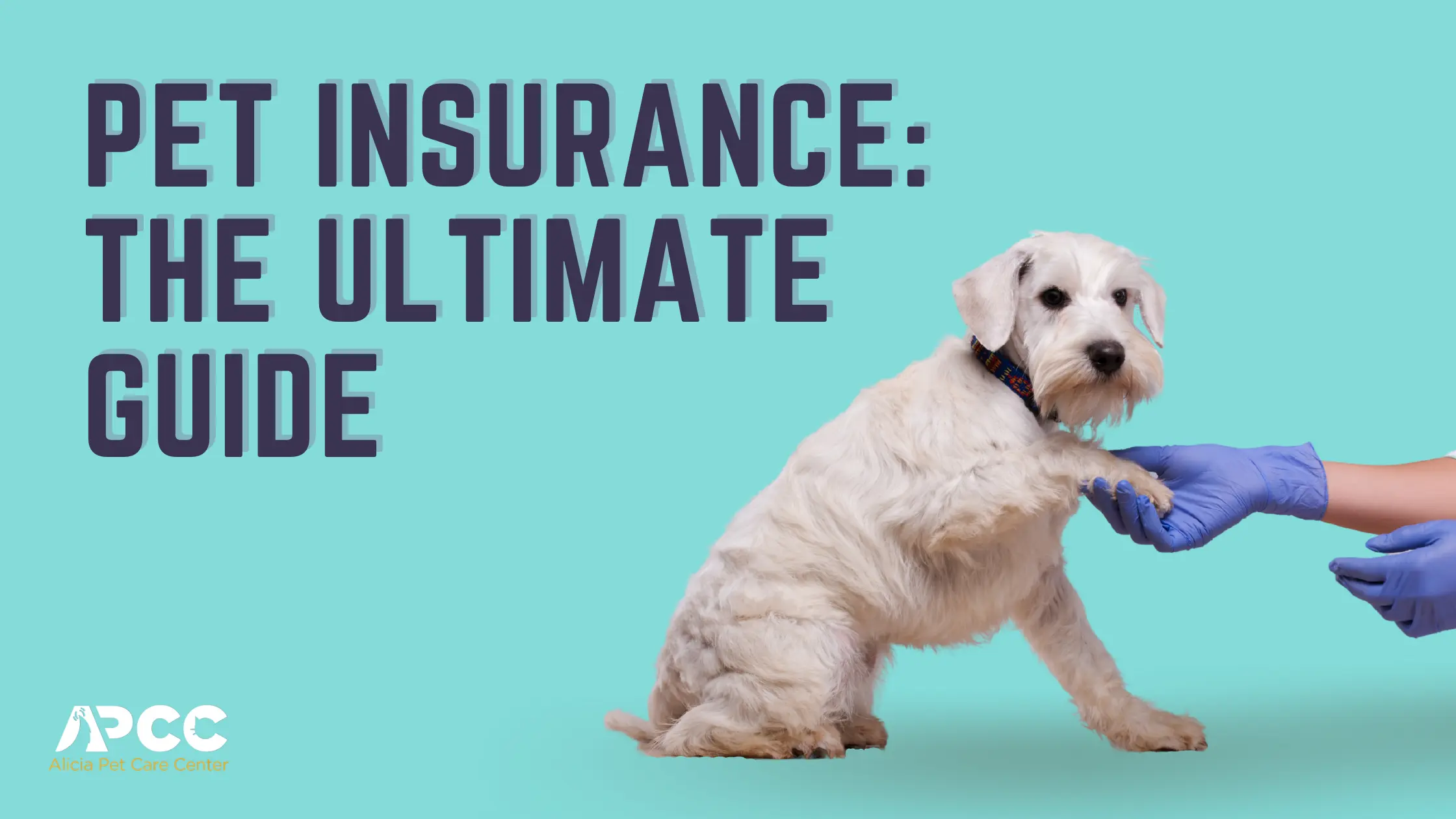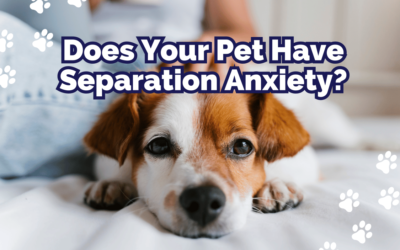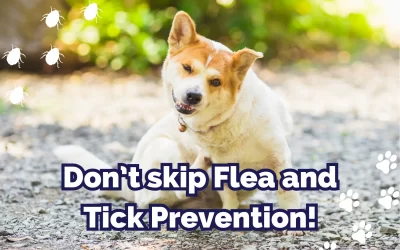
The idea of having to euthanize your pet because you can’t afford vet expenses is heartbreaking and, sadly, happens too often to many people. Fortunately, there are payment alternatives that can save your pet when they get ill or if an emergency happens to them. The best payment option out there is pet insurance.
Pet insurance is health insurance for your pet, which means it will cover much of the cost of treatments instead of paying out of pocket.
So, is pet insurance worth it?
Absolutely! If you have pets in your household, the possibility of them getting sick is 99%. Pet Health care costs can cost you thousands at the most unexpected times. Pet insurance is a safety net and will give you peace of mind and coverage when your fur-ever friend does get sick. It can cover emergencies, annual wellness visits, and chronic illnesses. This means you will be able to afford to keep your pet’s quality of life good as long as possible. As a veterinary hospital, we encourage pet owners to get on a pet insurance plan as soon as they can.
There are many out there, so it’s best to do some research. Most offer flexible pricing with different types of coverage.
How It Works
Pet insurance is not exactly like human insurance. For starters, depending on your coverage, pre-existing conditions are not covered. These are injuries or illnesses that show symptoms before your plan goes into effect.
Once you’ve found the best pet insurance for your pet, you will either sign up online or via phone. You will provide information about your pet’s age, breed, etc., and they will offer you types of coverage with a price specifically tailored for your pet.
These types of coverage include:
Accident-Only Plans
These cover accident-type incidents such as foreign body ingestion, bone breaks, or dog fight injuries.
Accident and Illness Plans
These are the most common plans. Your pet will be covered for accidents and illnesses such as allergies, cancer, and infections.
Insurance With Embedded Wellness
The Accident and Illness plan with specific wellness treatment coverage. These include: vaccines, dental care, and heartworm prevention.
Endorsements
These are wellness and cancer add-ons. The add-on options depend on your carrier.
Waiting Period
Once you choose your coverage plan and payment is submitted, you will enter a “waiting period”, which typically lasts 14 days.
After the waiting period is over, you can now use pet insurance at your veterinary hospital. Unlike human medical insurance, you have to pay the animal hospital. You will submit your insurance claims to your pet insurance provider, and they will reimburse you. Please note: this is something you will have to do. The animal hospital is not responsible for contacting your pet insurance provider.
Pricing
There are many factors that your provider will consider when giving you a price. These include the type of policy and its specifics. The specifics are the policy’s deductible and reimbursement. Pet age, pet breed, and other factors, including location, are considered as well.
Deductible
The deductible is the amount you pay for covered health services before the reimbursement starts. This can range anywhere from $0 to $1000.
There are two types of deductibles that carriers usually provide.
Annual Deductible
With an annual deductible, you must meet your deductible only once per policy term. This means that once the deductible has been met for the policy term, then the claim reimbursement only subtracts the copay until the policy renewal when the annual deductible resets.
This is a stable and predictable deductible. Only having one deductible to meet will allow some room for any accidents that may occur.
Annual deductibles are simple and easy to use because you only pay once per year for each pet. It doesn’t matter how often your pet gets sick and goes to the animal hospital or emergency room; you will still only have to meet the deductible once.
Per-Incident Deductible
Per-incident, also known as a per-condition, is applied every time your pet visits their vet for a new ailment. If your pet is seen for several medical issues, these plans could reimburse you less when you file a claim. These can be quite expensive if your pet visits the veterinarian several times in one year.
Reimbursement
As mentioned before, pet insurance is not like human medical insurance. These policies are reimbursement-based, which means you will have to pay upfront for your pet’s medical bills. For any reimbursement, a claim will need to be submitted to your pet insurance provider.
Coverage will be provided once the deductible has been paid for. There are reimbursement percentages that the plan covers. Typical percentage options are usually 70%, 80%, or 90% of the medical expenses. If you want a higher level of reimbursement, the pet insurance cost will be higher.
Pet’s Breed
Your pet’s breed is considered when your provider determines your insurance cost. This is because different breeds come with various predisposed illnesses resulting in more veterinarian visits and higher medical expenses.
Dogs are the most expensive pet. They are followed by cats, then the exotics such as birds, reptiles, rabbits, and ferrets.
Pet’s Age
Another factor your provider will consider is your pet’s age. The older your pet, the higher the price. This is because senior pets tend to have more illnesses and visits to the veterinarian.
Location
Your location can change the price of your pet insurance. This will depend on where you live and local veterinary costs.
Common Expenses Covered by Pet Insurance
So the next question is, What does pet insurance cover?
Here are the health-related problems most pet insurance plans cover:
Accidents and Injuries
These happen every day—poisonings, coyote attacks, joint or bone injuries, etc
Chronic Illnesses
These include allergies, arthritis, and skin conditions
Common Diseases
Such as ear infections, vomiting, and diarrhea
Severe Conditions
Cancer, heart disease, and diabetes, and dental disease are just a few
Hereditary Conditions
Such as hip dysplasia, eye disorders, and blood disorders
Testing and Diagnostics
X-rays, MRIs, CT scans, blood tests, and ultrasounds
Procedures
Such as surgeries, hospitalization, nursing care, endoscopies, and chemotherapy
Holistic and Integrative Therapies
Acupuncture, laser therapy, and stem cell therapy
Wellness Procedures
Such as vaccinations, parasite control, and spay/neuter
Not all plans will cover everything on this list. If you want a less expensive plan, you can purchase one with fewer benefits. If you wonder what types of plans are available, scroll up to our info section, where the plans are explained.
What is Not Covered By Pet Insurance?
Here is a list of exclusions:
Pre-existing Conditions
An injury or illness that your pet had before your coverage started is a pre-existing condition. Not all plans exclude these, so be sure to do your research.
Experimental treatment
Treatments not within the standard of care accepted by your state’s veterinary board are considered “experimental treatments.” Homeopathy, reiki, oils, herbs, and pseudoscience are just a few that are not covered in various regions.
Grooming
Grooming includes baths, shampoos, nail trims, anal gland expressions, and pet dye. These are not covered by insurance.
Training
Insurance providers do not cover puppy, behavior, obedience, and vocational training.
Food, Dietary and Nutritional Supplements
If your pet is on a veterinarian prescribed diet, it is usually not covered.
Non-veterinary Expenses
These include waste disposal services, record access or copying, license or certification, dog registration.
Client Testimonials
Still not sold on pet insurance? Here are some of our client’s stories.
I always thought, “Oh, that won’t happen to my dogs!” But it did, and I was looking at a $10,000 surgery and recovery for my chihuahua, who had to have his gallbladder removed. Who would’ve thought a dog would need its gallbladder removed?! Well, mine did! And thank goodness I had pet insurance because what was going to be $10,000 out of my pocket ended up only costing me $1,000. My little boy is happy and healthy! I made the decision to get pet insurance for all the “what if’s” that can happen in life, and I am so happy that I did! You never know what is going to happen to your furry children, and it is so much peace of mind to know that you are financially prepared IF something does!
Having insurance lets me sleep at night, knowing if my bulldog has a medical emergency or gets sick, I can treat her like the family member she is. You owe it to yourself and your family to be able to help your pet like you would help another family member. I hope I never need it, and I am sure glad I have it just in case.
It’s been a tough couple of weeks. I started to notice taco was rubbing his ears, and a couple of times, he yelped when I was taking off his harness. I took him to our vet, who noticed a little ear infection. After a week of antibiotics, and on Tuesday, he woke up and wasn’t moving, couldn’t get comfortable, and we could see his neck going into spasm…long story short, through an MRI, it was discovered taco had a ruptured c3 and c4 disc. They operated the next day; they noticed his 7and 8were also fragmented… they fixed him up -but sadly, he was distressed coming out of anesthesia and was put on oxygen.. definitely a very worrying time for us all. After 3 nights away, he’s finally home….PLEASE EVERYONE GET PET INSURANCE.
A Word from Our Chief of Staff
This is pulled from our Spaying and Neutering Your Pet Part 2 Podcast.
“… We have mentioned several diseases, issues, and problems that can come from not spaying or neutering your pets. I want to just make sure that we give you an opportunity to head some of these financial hits off at the pass. Get pet insurance. We encourage every pet owner to just do the sensible thing. We all know that when we get a car, we get car insurance. Even though you don’t know if you’re going to get into a car crash, you assume that you will not, yet you gladly (most of the time) pay your insurance, knowing that you have protection financially from some possible issue. Every single pet is going to have a “car crash.” Every single one of them. They are oftentimes going to have multiple car crashes, and they are going to be unpredictable and expensive.
You can’t necessarily just “total it” and move on to the next one without a significant negative consequence emotionally to your family. You need to get pet insurance if you have a pet. It’s pretty mind-blowing sometimes to see how much money people are recovering on their claims for these “car crashes” that your pet may get into.
As a veterinarian myself, I do have pet insurance on our family pets. Primarily, I got woken up to this issue when we decided to get a golden retriever. Funny enough, right? We said this breed has a 60% cancer risk. Yet, Golden Retrievers are the most common breed for veterinarians to have because their personality is so reliable and great. I told my wife to just anticipate that we’re going to have to use the services of another veterinarian at some point for our retriever, named “Fezzik Hodor”. So, if and when Fezzi gets cancer, I’m going to end up needing a specialist to treat him. I don’t really want to expose myself financially to that and make it, so I have to make a decision between: “Do I treat him for his cancer, which (most of the time they do really well with treatment), or do I not?” I don’t want that to be a purely financial decision. So I’m trying to not be a hypocrite, as well. But, I’m very glad that I have pet insurance because I’ve actually already used it a couple of times for several of my pets. There are many good companies out there. The point really is to get insurance for your pet.”
Where to Start
We recommend going to petinsurancereview.com to find the best possible insurance for your pet. This website is an informative and reliable resource for pet parents like yourself. Their main objective is to provide a clear explanation of each insurer’s policy benefits and pricing. They offer all pet parents the opportunity to share their own personal experiences of their insurance company.
Pet insurance can be confusing, but taking the time to research and choosing the right one for you can save you a lot of money and heartbreak. Ask any veterinarian- they will recommend that you get your pet on an insurance plan!
Was this article helpful? If so, share it with a friend!
About The Author
Kelsie Richards, Marketing Specialist |Kelsie joined the staff late in fall of 2020. She came to us with a variety of experience in the field and having successfully spearheaded social media and marketing for multiple small businesses. Outside of work, Kelsie loves to spend time with her dog ‘Daisy’, roller skating and going to Disneyland. Kelsie will be keeping you up to date with all the happenings on our social media platforms: Facebook, Twitter, Instagram, Snapchat and even TikTok — with photos and videos, pet health tips and ways to keep your fur-babies happy and healthy.






I am thinking of cancelling my Healthy Paws health insurance. So far, I have been giving them lots of money and when I did have a claim, it was denied. Now they have raised the rate from $72 per month to over $100. I feel like I am just handing them money each month which I think they have devised ways to prevent ever having pay out, even if I do have a legitimate need!
I am sorry to hear this. A yearly price raise is common, but if they are denying your claim then it might be time to start looking into other providers.
Pet insurance can be frustrating most of the time, but it’s really worth it in the end.